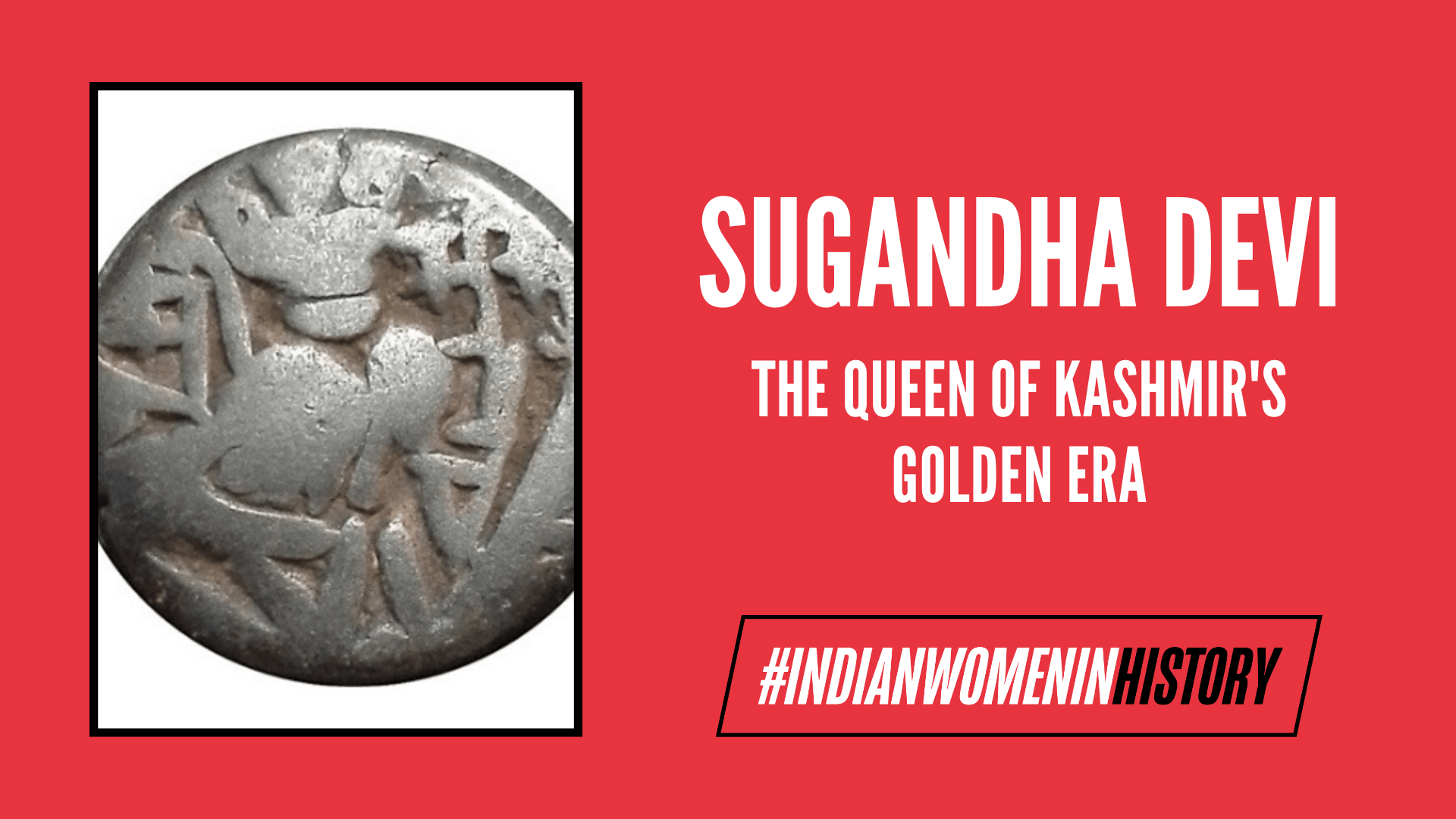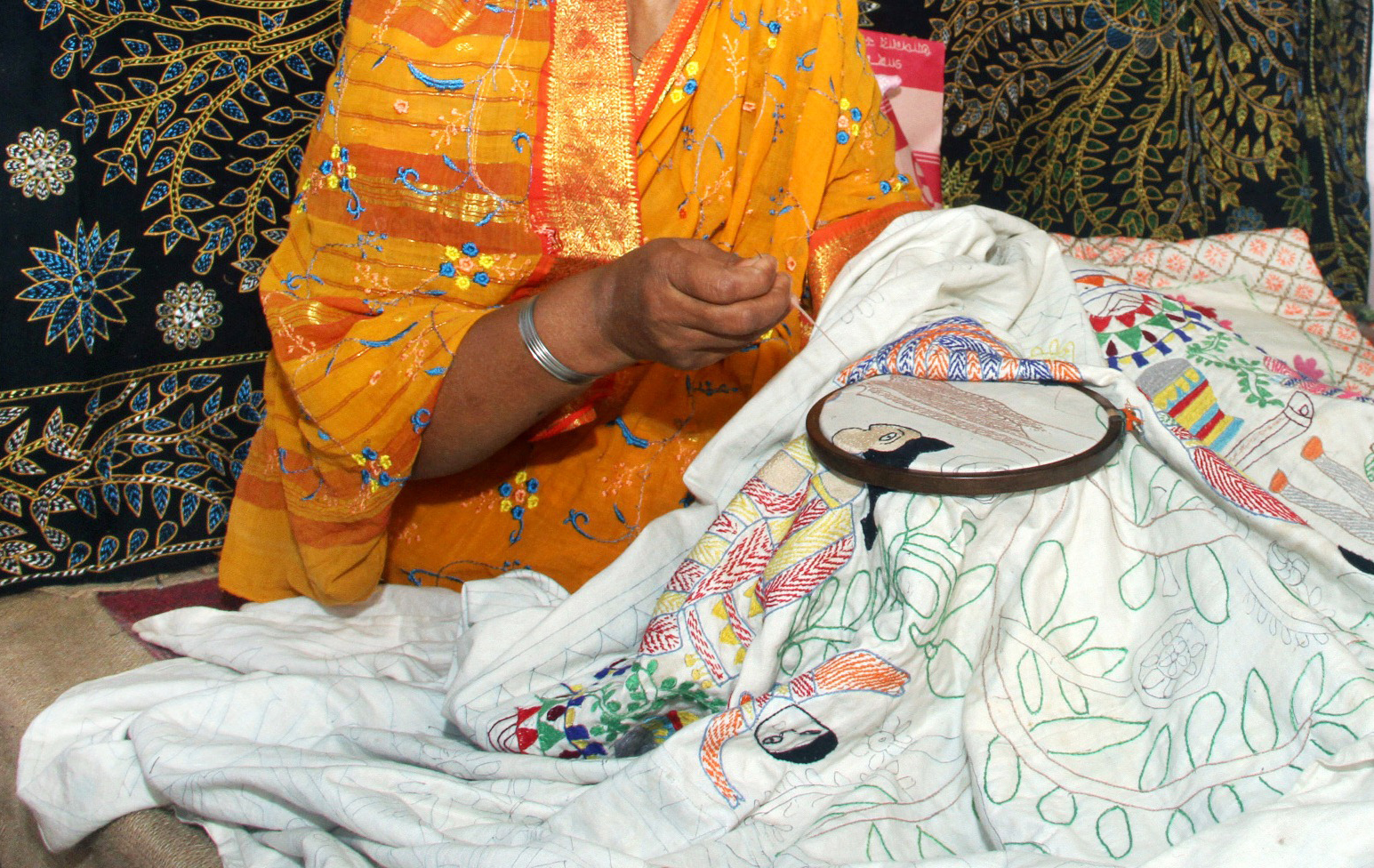I am unsure if anyone else shares my penchant for looking for namesakes. However, this hobby of mine, coupled with a newfound interest in Indian Literature, resulted in an unexpected adventure down the annals of history. Noted within the pages of Kalhana’s Rajataringini is the saga of the rulers of Kashmir. Featuring in this list are three women, one among them being Queen Sugandha. Read on to acquaint yourself with the life and legacy of the Queen, whose reign is often dubbed by historians as the ‘golden era’ for Kashmir.
Life and ascendancy of Sugandha Devi
Born in the ninth century, Sugandha Devi married Shankaravarman (CE 883-902) of the Utpala dynasty. This union catapulted the political prestige of the royal family, for the Queen consort herself belonged to a powerful family. In Rajatarangini, Kalhana introduces her as — “…the daughter of the illustrious Svamiraja, the lord of the northern region, named Sugandha was beloved as is the night of the full moon by the moon (157).” Adding to this list of assets was her courage to accompany her husband in wars, a practice relatively uncommon in monarchical India.”
Born in the ninth century, Sugandha Devi married Shankaravarman (CE 883-902) of the Utpala dynasty. This union catapulted the political prestige of the royal family, for the Queen consort herself belonged to a powerful family. In Rajatarangini, Kalhana introduces her as — “…the daughter of the illustrious Svamiraja, the lord of the northern region, named Sugandha was beloved as is the night of the full moon by the moon (157).” Adding to this list of assets was her courage to accompany her husband in wars, a practice relatively uncommon in monarchical India.”
Grief followed soon in her life as Shankaravarman died trying to recover from a battlefield injury. Many followed their king in death, but Sugandha Devi donned the mantle of becoming the regent until her son, Gopalavarman, came of age. She found a way for the lineage to continue by placing the rightful king on the throne. However, this arrangement didn’t last long enough to stabilise the power in Gopalavarman’s hands. Chronicles state that the Queen Regent began indulging in amorous activities with the minister, Prabhakara. When the king became aware of their relations, the minister felt threatened and planned regicide with the help of a sorcerer.
Samkata, Gopalavarman’s brother and the last of Shankaravarman’s lineage, was placed upon the throne. However, he also passed away under mysterious circumstances within ten days. She made several attempts to restore the throne within the family of the famous Hindu King, Avantivarman (father of Shankaravarman), but her efforts bore no fruit. Kalhana notes — “Thus when the line of king Samkaravarman had come to an end, upon the prayer of the subjects, Sugandha assumed royal authority in person (243).”
Reign of Queen Sugandha
Queen Sugandha’s regency proved to be lacking, but her reign (CE 904-906) was majestic. It was short, yet much was accomplished by her, owing to which it is often dubbed Kashmir’s ‘golden era’. She founded the towns of Gopalapura and Sugandhapura.
Queen Sugandha’s regency proved to be lacking, but her reign (CE 904-906) was majestic. It was short, yet much was accomplished by her, owing to which it is often dubbed Kashmir’s ‘golden era’. She founded the towns of Gopalapura and Sugandhapura. The Gopalamatha (monastery) and Gopalkesava (Vishnu temple) were established by her for the advancement of religion in early medieval Kashmir. Along with her husband, when he was alive, she also built Sugandhesh Temple. Located in present-day Pattan, it is known for its distinct architecture.
In reference to Queen Sugandha, in his book ‘Daughters of the Vitasta’, Premnath Bazaz writes — “She was loved by the people, trusted by the courtiers, and admired by the army, but this efficient administrator and wise queen couldn’t live happily ever after to serve her people as the kingdom was infested with conspirators and opportunists who were ever ready to create trouble for her.“
In those years, the court of Kashmir had two powerful factions that decided who sat on the throne. They were the Tantrins — the military faction, and their rivals Ekangas — the royal bodyguards. Post a power struggle and consequent dethronement by the Tantrins, Sugandha Devi tried regaining power with the help of Ekangas and other loyalists. They made a last stand for their Queen in 914, when a battle ensued in the suburbs of Srinagar. But, it was a lost cause. Imprisoned in the “Nispalaka Vihara”, Queen Sugandha breathed her last there.
In those years, the court of Kashmir had two powerful factions that decided who sat on the throne. They were the Tantrins — the military faction, and their rivals Ekangas — the royal bodyguards. Post a power struggle and consequent dethronement by the Tantrins, Sugandha Devi tried regaining power with the help of Ekangas and other loyalists. They made a last stand for their Queen in 914, when a battle ensued in the suburbs of Srinagar. But, it was a lost cause. Imprisoned in the “Nispalaka Vihara”, Queen Sugandha breathed her last there.
Her legacy from the lens of feminist aesthetics
Among the major discoveries from the era of Queen Sugandha are the copper and bronze coins. The details of these coins will surely pique the interest of numismatics enthusiasts.
Some may interpret the use of masculine titles by Queen Sugandha as a way of establishing her status in a man’s world, like a man. It may be seen as evidence of the power she wielded — one equivalent to that of a king (a man). I offer an alternate reflection from the perspective of feminist aesthetics that seeks to throw light on the understanding of gendered categorisations in the era of Queen Sugandha.
Anu Aneja, in her book on Feminist Theory and The Aesthetics Within, traces an understanding of gender as a fluid concept in South Asia. Her analysis begins with the artefacts found in Indus Valley Civilization and reaches into Rekhta. The connection I seek to establish will be more evident if Aneja’s arguments regarding mystic aesthetics are considered.
In this regard, she states — “…the masculine and the feminine appear as shifting attributes rather than as frozen corporeal essences and both female and male mystics [here, monarch] appear to embody/rise above these attributes.” Similarly, these coins and their markings showcase a fluid and non-essentialist understanding of gender that may have been prevalent during that era.
In other words, our modern understanding of gender roles leads us to misread socio-historical clues in a manner that fits current explanations. The scenario changes drastically when an analeptic understanding of the masculine and feminine is considered. The coins issued by Queen Sugandha tell a different story regarding the understanding of gender in a society of yore. It reveals that back then masculine and feminine titles could’ve been used interchangeably, not reflecting essentialism, hierarchy or superimposition of attributes; instead, only a fluid understanding of the concept of gender.
Learnings from the Queens of Kashmir
Back in school, my history book mentioned Razia Sultan as the only woman to rule Delhi. Thrones and legacies belonged to men. Women were excluded from the Law of Primogeniture, and at best, they were allowed to advise from behind the veil. Strengthening these views are many texts, including the Manusmriti.
Also read: Razia Sultan: The First and Last Woman Ruler of Delhi Sultanate| #IndianWomenInHistory
However, Kashmir’s history boasts of having many queens — Yasovati, Sugandha Devi, Didda, and Kota Rani. They were beautiful, fierce, and good rulers. If nothing else, bringing their stories back from oblivion helps encourage modern women to take more leadership roles; it reminds everyone how women rulers have shaped the shared history; and, most of all, it inspires women to take charge of their life.
Also read: Why Manusmriti Dahan Divas Is Still Relevant Today
Featured image source: Shreya Tingal for Feminism In India
About the author(s)
Sugandhaa's major areas of interest are aesthetics and feminism. She loves engaging with historical fiction - when she isn't reading it, she is daydreaming about it!






